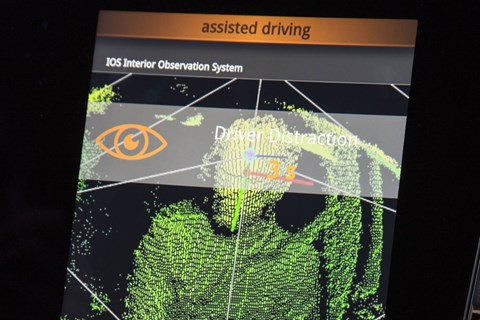► Does it work?
► ZF’s Wrong Way Inhibit
► Tested on a VW Touran
At first glance it appears to be one of those ‘I’d never be that stupid’ driving errors: trying to turn into a one-street against the flow of traffic or, even more disastrously, heading onto a motorway via the exit ramp.
Yet, according to a US study covering 2004 to 2009, an average of 360 people a year were victims of wrong-way driving on US highways. In Germany the number of fatalities in 2016 was 12 – with 2200 radio traffic announcements of wrong-way incidents.
The boffins at ZF have a solution. ‘With Wrong-Way Inhibit we want to help put an end to tragic accidents caused by wrong-way driving,’ says Dr Harald Naunheimer, head of research and development.
The German engineering company showed off the technology in its Vision Zero demonstrator, a VW Touran equipped with a suite of sensors and technologies all designed to make roads safer for motorists as well as pedestrians.

How does the car know? The Vision Zero vehicle uses multiple approaches to detect dangerous decisions: highly accurate maps that are constantly updated via the cloud; traffic sign and road marking recognition; a front tri-camera system; and long- and short-range radar. Vital to Wrong-Way Inhibit is the accuracy of the mapping and GPS location system, which knows where the car is to within half an inch, as well as real-time traffic and weather data.
Wrong-Way Inhibit reacts as soon as there is an indication that the driver is about to enter a road in the wrong direction. For example, if the driver heads for a motorway entry instead of an exit road, the system first warns with an acoustic signal, seatbelt vibration and an optical signal on the dashboard. A significantly higher steering wheel resistance reinforces the message that the driver is about to make a wrong turn.
If the driver pays no heed, the system can steer the car to the edge of the lane, brake initially to walking speed and then stop. Furthermore, the headlights and the hazard warning lights can be activated to alert oncoming traffic.
Keep your eyes on the road
ZF’s Vision Zero test car is also fitted with anti-distraction tech that involves a laser-based interior camera with learning capability. The camera monitors the position of the driver’s head in 3D, even in poor lighting.
As soon as the driver looks away from the road, the system notices – and if it calculates that there’s some danger then it alerts the driver with an optical warning, an acoustic signal and tightening the seatbelt. Simultaneously, the system is capable of taking over steering and staying on track in bends.
If the driver still fails to respond, the system can steadily reduce power and, finally, if the driver continues to ignore all warnings, it can bring the car to a halt.
Does it work?
The system is still being developed, but on the evidence of a brief drive at a test facility the answer’s a cautious ‘yes’.
When I took a wrong turning, it stopped at the side of the road, headlights on full and hazards flashing at the (imaginary) oncoming traffic. That’s the job it’s meant to do. It’s alarming, but preferable to the alternative.
Check out our tech news here